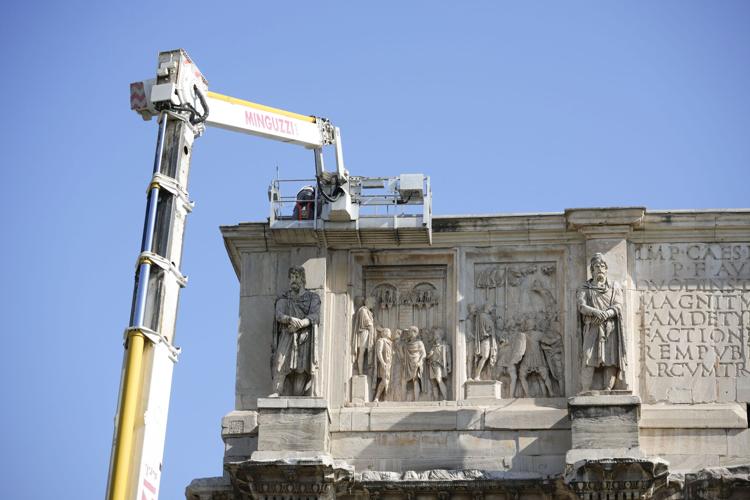Latest reports show that lightning has struck the Constantine Arch near the Colosseum in Rome during a violent thunderstorm, breaking off fragments from the ancient structure.
Authorities in the Italian capital said that the fragments were immediately gathered and secured by workers at the Colosseum Archeological Park. The extent of the damage, which occurred on Tuesday, was being evaluated.
“The recovery work by technicians was timely. Our workers arrived immediately after the lightning strike. All of the fragments were recovered and secured,” the park was quoted as saying in a statement.
Rome was hit by a sudden and powerful storm that dumped more than 60mm of rain in less than an hour, equivalent to a month’s rainfall in autumn. The city’s mayor, Roberto Gualtieri, described it as a “downburst”.
A storm with powerful downward winds was also reported off Sicily on 19 August, when the luxury yacht Bayesian sank, killing the British tech magnate Mike Lynch and six others.
After Tuesday’s rains, Sabrina Alfonsi, Rome’s councillor with responsibility for the environment, said: “The power of the storm was sudden and was not predicted by any weather bulletin.”
Residents have described “apocalyptic scenes”, with flooded subways, squares and streets. A part of the scaffolding of a grandstand inside the Circus Maximus also collapsed.
Meteorologists say record temperatures in the Mediterranean Sea have contributed to the freak storms that have hit Italy this summer. Sea temperature have reached 30C, three degrees higher than average, during two months of consecutive heatwaves.
Extreme rainfall is more common and more intense because of human-caused climate breakdown since warmer air can hold more water vapour.
Last week, during another violent storm, lightning struck a building in the Castelverde area of Rome, causing a fire.
Story was adapted from the Guardian.
